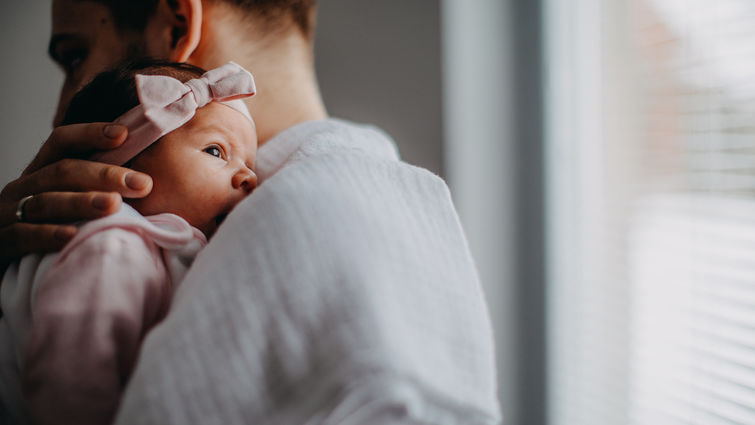
Bringing home your baby for the first time is incredibly exciting, but for many, it can also be a daunting task.
Michelle Parker, Safe Kids Coordinator Inland Empire at Loma Linda University Children’s Hospital, reassures parents that learning how to keep their child safe will come over time.
“No parent has all the answers on their own,” Parker says. “Don’t be afraid to use online resources and reach out to experts when you have questions.”
She knows it’s easy to be overwhelmed by the vast amount of information on baby safety, and she offers these five manageable tips on protecting your child.
1. Remove blankets and toys from your baby’s crib — a firm mattress and fitted sheet are all you need.
“Unfortunately, too many children under the age of one die from unsafe sleeping conditions,” Parker says. “Following the ABC’s of safe sleep can help decrease that risk.”
A – Alone: Babies should sleep alone in a safe sleep environment like a bassinet or crib — babies sleeping with others in a bed have been proven to increase chances of sudden infant death syndrome or SIDS occurring due to unintentional suffocation from bedding or others in the bed blocking the baby’s airway. However, a baby sleeping in a safe sleep space in the same room with a parent or parents decreases the risk of SIDS. Babies should not sleep in car seats once they are removed from the car. Once the car seat is not in the car, it doesn’t achieve the same angle to protect the baby’s airway and keep it open.
B – Back: Babies need to sleep on their backs — this is the best way to protect their airways.
C – Crib: Babies sleeping in a crib, bassinet or portable crib meant for sleeping helps reduce the risk of SIDS. All sleep environments should have a firm mattress with a fitted sheet only. No blankets, toys, bumper pads, pillows or anything else should be inside the crib because they are a suffocation risk.
2. Learn to use your child’s car seat the correct way.
According to Parker, some car seat basics include:
- All children need to ride rear-facing until at least age two or older.
- The car seat should be rated for your child’s weight and height.
- Car seats should be installed tightly, so they don’t move more than one inch back and forth or side-to-side when you tug moderately where the seat is buckled.
- The chest clip needs to be placed at armpit level, and harnesses need to be snug.
Register for our free car seat safety class to learn more.
3. Make sure you have both a working smoke alarm and a carbon monoxide alarm on every level of your home and in all sleeping areas. Test the alarms to make sure they work.
“Most often, fires take place at night while people are sleeping,” Parker says. “Not having, disabling or having a dysfunctional smoke alarm can put your family in harm’s way.”
Additionally, Parker says to be sure to have a working carbon monoxide alarm.
“Carbon monoxide is colorless and odorless, so often people don’t know when they are being poisoned,” she says. “Not having working smoke and carbon monoxide alarms can be deadly.”
4. Place your baby’s crib and other furniture away from windows and blinds — your baby is safer without any strings or cords within reach.
“Children of all ages are curious by nature,” Parker says. “Once they start to crawl and walk, they can find ways to explore their environments in ways we might not even imagine.”
Keeping furniture away from windows hinders toddlers from climbing up and leaning again windows and screens, both potentially creating the risk for a window fall, Parker says. If window treatments or blinds have cords or strings, Parker advises parents to be sure they are safely wound in a child-proof device or tied securely up high and out of the child’s reach.
“Unsecured cords and strings have caused choking injuries and deaths, which are preventable,” she says.
5. Set your water heater to 120F to avoid scalds.
“As natural explorers, once children can reach faucets, they are often drawn to playing in water,” Parker says. “If water heaters are set above 120 degrees Fahrenheit, children can be severely scalded. Also, remember to check the temperature of bathwater before placing your baby into the bath.”
Visit SafeKids online for more safety information and tips from experts on everything you need to keep kids of any age safe from preventable injuries.
